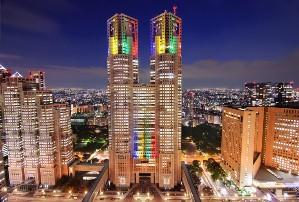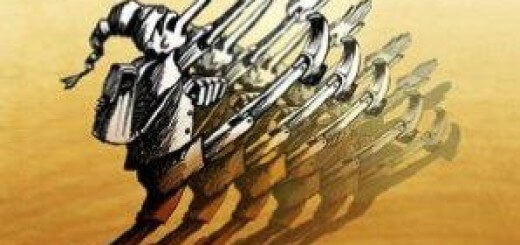
The Japanese economic miracle is a historical fact of record growth of the Japanese economy. The economy grew at an annual rate of 10%, the highest rate of growth among the countries of the time. The rapid growth rate in the shortest possible time allowed Japan not only to fully recover from the defeat in the war, but also to come in second in economic power, consistently beating France, Italy, Canada, great Britain, Germany, the USSR.
So, on September 2, 1945 Japan capitulated. The country was ruled by the us military, the economy was in a state of ruin. “Industrial output decreased to 20% of the pre-war level.
The economy revived slowly: the pre-war level of production was restored not in 1949, as in Western Europe, but only by 1953”. In this situation, Japan needed to move to a new development strategy, and the essence of this strategy was a fundamental departure from the past. It was necessary to create a new structure of the economy, new incentives to work, democratization of society, development of market relations and entrepreneurship. Thus, it was decided to invite American entrepreneurs and managers who have developed a program relating to all aspects of Japanese life.
The Japanese economic miracle arose in 50-60 years of the 20th century
This phenomenon seems incredible, because having suffered a severe defeat in the war, Japan suffered significant damage, both morally and materially, and despite this was able to break into economic leaders.
The main problem in Japan at that time was the lack of its own raw materials limited opportunities for extensive growth and predetermined the need for an intensive development path. Japan had to import 99% of the necessary natural resources (100% bauxite and Nickel, cotton, natural rubber, more than 90% oil, iron ore, non-ferrous metals). Limited natural resources forced Japan not only to constantly modernize production, develop and introduce material and energy-saving technologies, but also to develop the export orientation of the economy. The export of national products was to provide financial resources for the import of raw materials, energy and food resources. Export orientation in a highly competitive environment required the Japanese industry to produce products to the highest international standards, to ensure its competitiveness in such parameters as price, quality, service, etc.
A number of factors contributed to the rapid recovery of Japan’s economy:
1. Total control over export-import processes was taken, the import of foreign finished products capable of silencing Japanese industry was prohibited, but the import of modern Western production technologies was encouraged, which ultimately aimed at the development of the technological industry of Japan.
2. At the state level, producers of new products were supported, and dealers were in a less enviable position, the pressure in their direction made this type of activity not profitable. As a result, the number of primary producers grew and thus national wealth increased faster.
3. Effective use of the achievements of STD. Japan skillfully applied the achievements of world scientific thought, acquiring patents, licenses, know-how and implementing them in practice. This made it possible to save money and make a huge leap in science and technology on the basis of the scientific and technical level already achieved by other countries
4. The active economic role of the state, which was a major owner and buyer, was of great importance for the economic recovery of Japan. The state also had an impact on economic development through planning, but plans were developed by representatives of financial groups and corporations. Two types of plans were developed – national, the implementation of which was provided by private investment, and sectoral, implemented by the financial means of the state.
However, first of all, this merit is directly to the Japanese workers who performed the most difficult tasks, so the “Japanese economic miracle” is primarily based on the system of labor relations.
You can distinguish the main features of such a system:
– the system of lifelong employment, which is based not on the formal legal “consolidation” of the person, but on the real ensuring the interest of employees to work maximum time in this enterprise and to link their fate with it for life. The increase in the length of service affects the level of wages and future pensions, the duration of leave, to obtain some additional privileges;
– socio-psychological factors that are of great importance in modern conditions to improve production efficiency. The administration of the company takes measures to create a good psychological climate and team building. An understanding of the company and its employees as a single family is formed, all members of which help and support each other;
– the wage system. The amount of wages of employees of firms consists of many elements. On the formation of total income of the employee is influenced by age, seniority, education, position and responsibilities, working conditions, the results, benefits for the family maintenance, housing, transport. A feature of production in Japan is the relatively low share of wages in the value of the final product compared to other countries. Thus, the share of wages in the finished product in the US is 32%, in the UK – 27%, in Japan – 11%. This is due to the fact that in Japan the growth of labor productivity is much faster than the growth of wages, and the growth rate of labor productivity is higher than in many other countries.
– the system of personnel rotation, involving the movement of workers horizontally and vertically every 2-3 years. The main purpose of the rotation is to determine the place that most contributes to the realization of the potential abilities of the employee and, ultimately, the effectiveness of the company as a whole;
– the system of training in the workplace is associated with a clear division of functions between secondary and higher education, providing basic knowledge, and in-house training, providing professional training;
– reputation system, which involves the preparation of annual characteristics for each employee at the place of work of his colleagues. Such characteristics help employees to objectively assess themselves both in the labor process and in the relationship in the team.
By 80-90-m. Japan has managed to gain a foothold in second place in the world, second only to the United States.
Thus, in just one generation, the country’s economy grew more than such economic giants (at that time) as the United States, France, Canada, Germany and Italy. Hence the concept of the Japanese economic miracle, which characterizes the dizzying rise of the country with ordinary territorial and human resources. However, in the 90-ies, this phenomenon was replaced by a disease known as the Lost decade, which occurred after the collapse of the financial sector of the country.





















